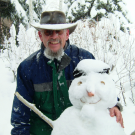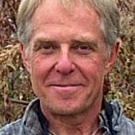Day 1: October 17
Time: 9:30 am
How we look at riparian areas: Technical approaches to describing riparian systems.
Abstract 1:
Title: Conserving Streams and Biodiversity in a Changing Environment: A Genetics Approach
WHITHAM, Thomas G.1,2
1Merriam-Powell Center for Environmental Research, Northern Arizona University, Flagstaff, Arizona 86011 USA
2Department of Biological Sciences, Northern Arizona University, Flagstaff, Arizona 86011 USA
Abstract – The role of genetics in restoration has largely revolved around the policy of restoring with local genotypes based on the logic that local plants are best adapted to local conditions. In a relatively stable environment, this is a sound practice; however, climate change, invasive species, and other anthropogenic impacts on the landscape have largely rendered this policy as inadequate at best and damaging at worst. Because of rapid environmental change, plants that are locally adapted today are likely to be locally maladapted to tomorrow’s environments. Thus, in regions of especially rapid change such as the American Southwest, local populations are likely to lack sufficient genetic variation to adapt to these new environments. Similarly, with rapid change and a fragmented landscape, many species cannot migrate fast enough to reach favorable environments. Ignoring this “global change reality” will likely result in long-term restoration failure, high biodiversity loss, and the loss of restoration funding. With foundation species that support 1000s of other species (e.g., Fremont cottonwood, coyote willow), it is crucial to identify the individual plant genotypes and populations that can survive both current and future environmental conditions. By focusing on these foundation species that are community and ecosystem drivers, we can also save many of their associated species that are dependent upon them for their survival. To achieve this goal, new experimental approaches are required that identify the genetic components of local adaptation to current and future conditions to maintain biodiversity, community stability, and ecosystem processes. Key to this approach is the use of field trials embedded in federal, state, and private lands such as the Southwest Experimental Garden Array (http://www.sega.nau.edu). Based on the findings in these trials, restoration biologists can then deploy superior genotypes, populations, and species mixes that are most likely to survive in a changing environment.


